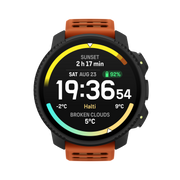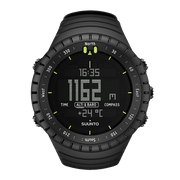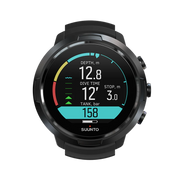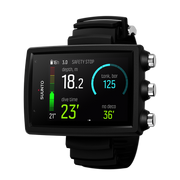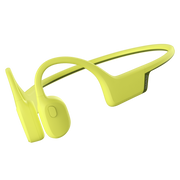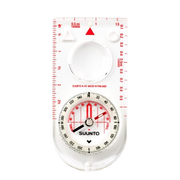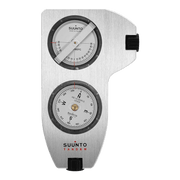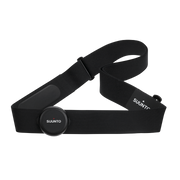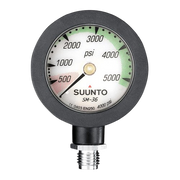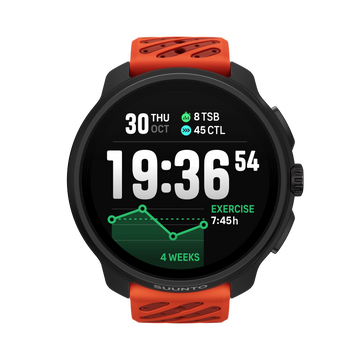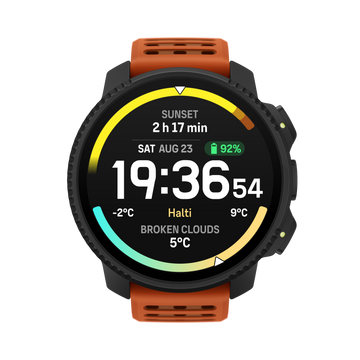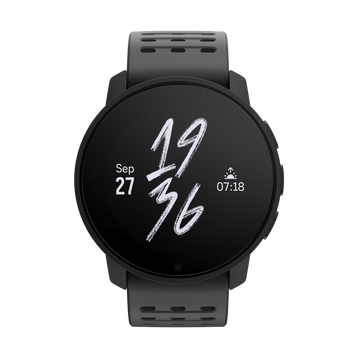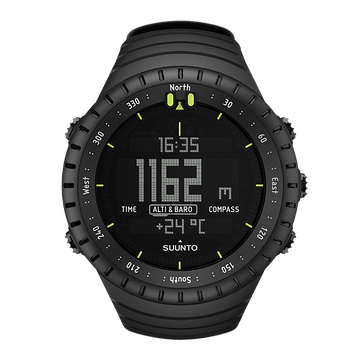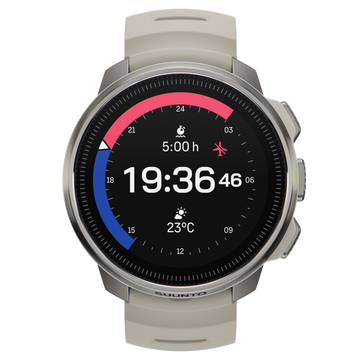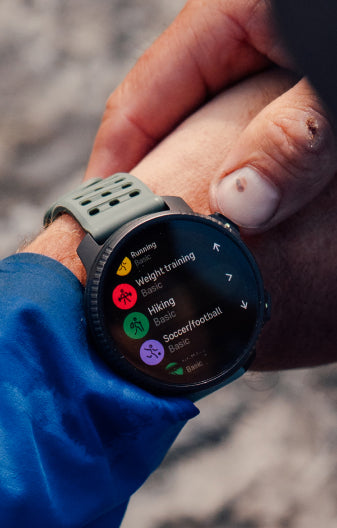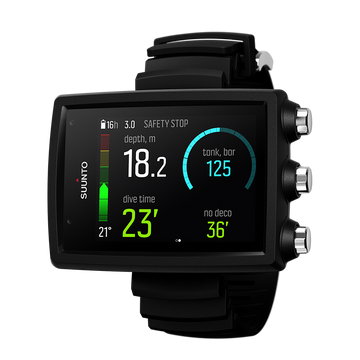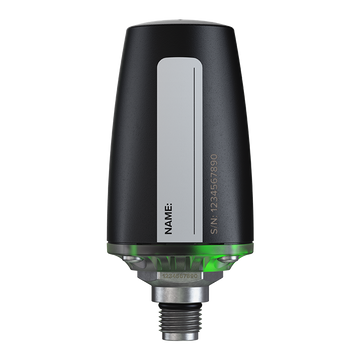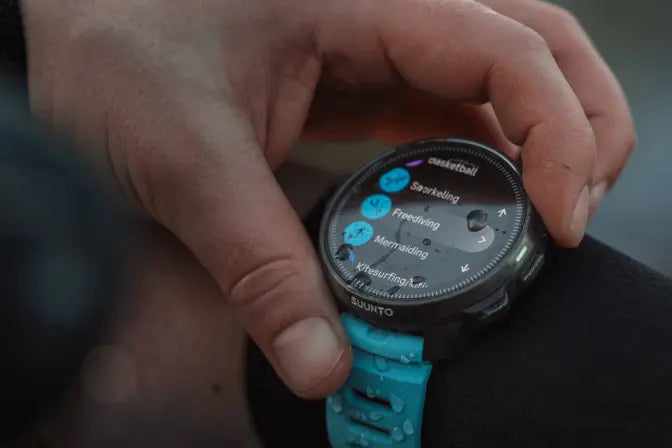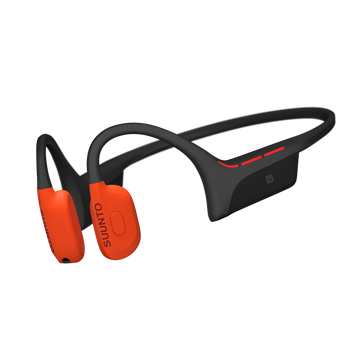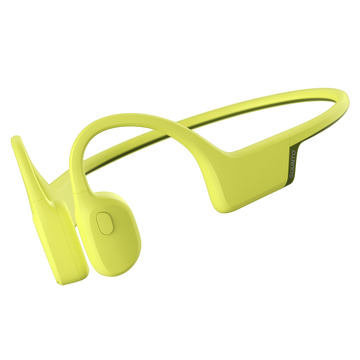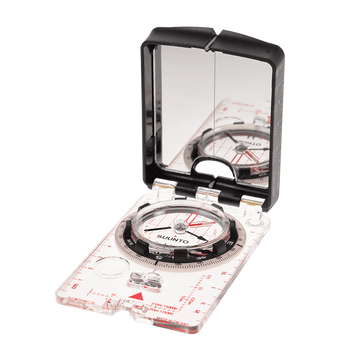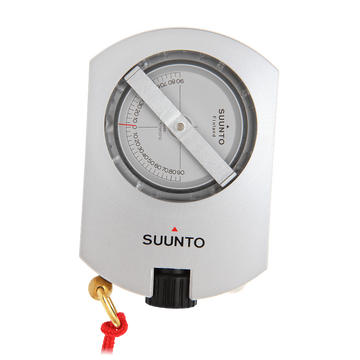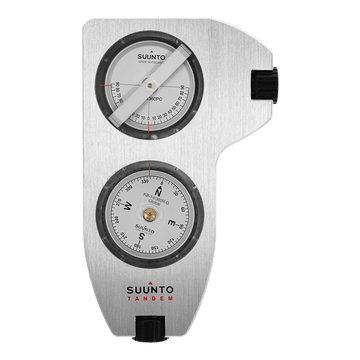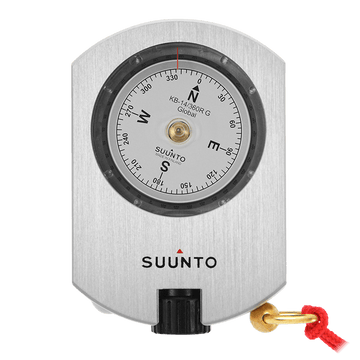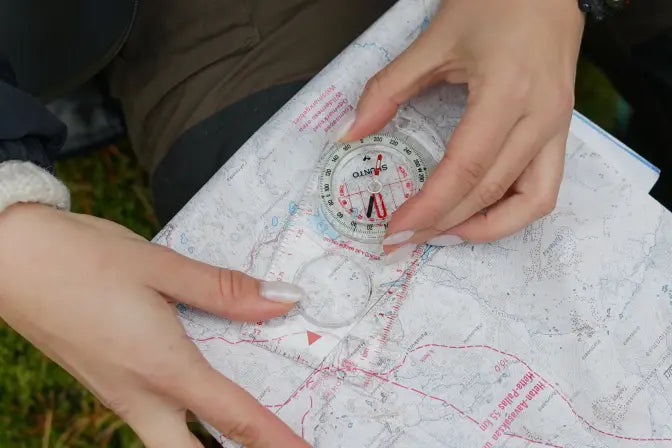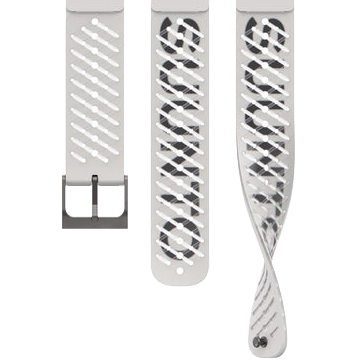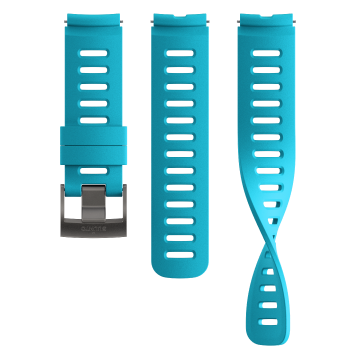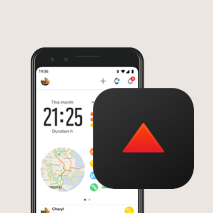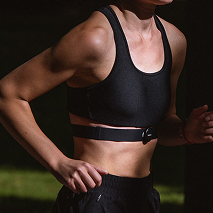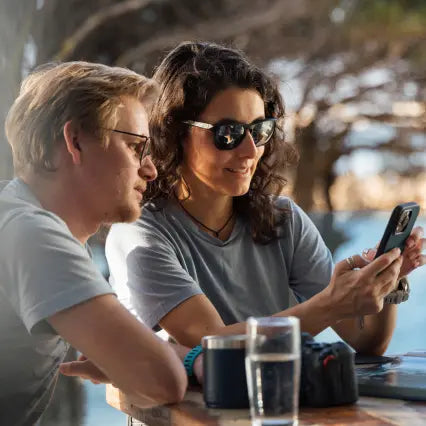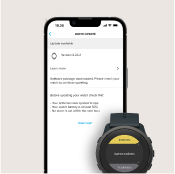

Suunto Blog

TUTORIAL TUESDAY: WHERE AM I? FINDING YOUR LOCATION WITH AN AMBIT
Figuring out where you are is fairly simple when you have a map, the visibility is good and you can identify a few landmarks. But when the going gets rough, the weather is against you and the sun sets, the task isn’t so simple any more. In this tutorial you will learn how your Ambit can help you to find your location.
The basics are simple: you can find your current position with a few clicks of the Ambit.
Choose: Navigation – Location – Current
To make sure you get the satellite fix as quickly as possible, remember to sync your Ambit regularly and keep it up to date.
Once you have found the GPS signal you will get your current location in geographic coordinates. The most common coordinate system in GPS devices is WGS84, which is also used by default in Suunto GPS watches.
Use the same coordinate system on your watch and map
If you need to give your exact location to someone in a rescue situation, WGS84 works. But when you start using a map and defining your location on it, you will need to make sure your GPS watch and the map use the same coordinate system. (To change your Ambit’s coordinate system go to General – Formats – Position format.)
Latitude/longitude is the coordinate system used in marine navigation and is common on topographical outdoor maps. Latitude lines run horizontally. The zero latitude is the Equator. Longitudes run vertically and the zero longitude runs through Greenwich, England. The latitude is normally the first number expressed in lat/long coordinate (for example 60°16'19" N 24°58’23’’ E).
WGS84, which uses latitudes/longitudes, is actually more than a coordinate system: it also includes a model of the globe that enables the use of GPS altimeters.
UTM is a grid coordinate system that is used on many outdoor maps. It divides the map into a perpendicular grid in which each of the squares are the same size anywhere on the map. This means the coordinate system is tied directly to a distance in meters.
This Norwegian map has both WGS84 (black) and UTM (blue) coordinates.
The black numbers on the sides of the map are degrees latitude; the numbers on the top and bottom of the map are degrees longitude. To determine your location on the map, draw a west to east line through the corresponding latitude and a south to north line through the corresponding longitude. The intersection of the two lines indicates your position.
The blue numbers are the northings and eastings of the UTM coordinate system. You can use them like the lat/log when finding your location on the map.
You can get support for your Suunto product at support

Running across the USA with Patrick Sweeney
Patrick Sweeney may have pulled out of Race Across USA but he's continuing anyway in a bid to cross the States from California to Washington D.C. by foot.
Since setting out mid-January in a running race across the USA, the Suunto-supported athlete has so far clocked 2,000 km of the 5,000 km journey. Unfortunately he had to pull out of the race itself, but is continuing the journey anyway with New Zealand runner Jup Brown as a fundraiser for various charitable projects.
Patrick Sweeney is a barefoot devotee, whatever the weather. ©Patrick Sweeney
Says Patrick: “Since Jup and I started Run With Us America we have been professional speakers at a health expo, interviewed by four radio stations, featured in three newspapers, spoken to hundreds of children at multiple schools, been joined by runners from five countries and at least seven different breeds of dog and received thousands of waves from passers-by. Most importantly we have had a lot of fun and inspired a few people along the way.”
Continuing along the same route as Race Across USA, the pair’s main goal is to raise money for the 100 Mile Club, a non-profit that encourages children to run 100 miles a year, with the aim of improving fitness, learning and self-esteem.
So far the team have crossed the states of California, New Mexico and Arizona. They are currently in central Texas, nearly halfway to the US capital. Watch a video of their New Mexico leg below.
“We have been able to run 30-35 miles (48-56 km) each day. My Ambit3 is working great and keeps me motivated,” he adds.
Main image: ©Patrick Sweeney

Running across the USA with Patrick Sweeney
Patrick Sweeney may have pulled out of Race Across USA but he's continuing anyway in a bid to cross the States from California to Washington D.C. by foot.
Since setting out mid-January in a running race across the USA, the Suunto-supported athlete has so far clocked 2,000 km of the 5,000 km journey. Unfortunately he had to pull out of the race itself, but is continuing the journey anyway with New Zealand runner Jup Brown as a fundraiser for various charitable projects.
Patrick Sweeney is a barefoot devotee, whatever the weather. ©Patrick Sweeney
Says Patrick: “Since Jup and I started Run With Us America we have been professional speakers at a health expo, interviewed by four radio stations, featured in three newspapers, spoken to hundreds of children at multiple schools, been joined by runners from five countries and at least seven different breeds of dog and received thousands of waves from passers-by. Most importantly we have had a lot of fun and inspired a few people along the way.”
Continuing along the same route as Race Across USA, the pair’s main goal is to raise money for the 100 Mile Club, a non-profit that encourages children to run 100 miles a year, with the aim of improving fitness, learning and self-esteem.
So far the team have crossed the states of California, New Mexico and Arizona. They are currently in central Texas, nearly halfway to the US capital. Watch a video of their New Mexico leg below.
“We have been able to run 30-35 miles (48-56 km) each day. My Ambit3 is working great and keeps me motivated,” he adds.
Main image: ©Patrick Sweeney

TUESDAY'S TUTORIAL: USING TRAINING PROGRAMMES ON MOVESCOUNT
In this week's Tuesday tutorial, you'll learn how to use Movescount's training plans and planned moves, and how to modify them to suit your needs.
According to a famous author, any goal without a plan is just a wish. The same principle applies to training: a plan based on your goals, strengths, weaknesses and other personal variables will certainly help you achieve your objectives.
‘A good training programme keeps you focused on your key exercises and won't stress you out. You don't need to worry about how often you train or what's going to happen next month. Just follow the programme. It will prepare you for your goal,’ says Janne Kallio, an experienced Ironman and digital marketing specialist for Team Suunto.
‘But there's another problem: no training programme can know how you're feeling,’ adds Janne.
Janne himself follows a key training principle: he chooses certain compulsory workouts and trains the rest of the time according to his state of recovery.
‘When I'm mentally and physically ready, I make sure I at least do the compulsory exercises.
But he also points out that training is only one part of life.
‘In a 12-hour working day, it's not advisable to do a long, intensive run, especially if you can put it off until the next day. So listen to your body and adapt your plan if necessary.
USING TRAINING PROGRAMMES ON MOVESCOUNT
Movescount is a major source of training programmes. The community has already created thousands of them. To simplify your search for the most suitable programme, you can filter the results according to your level of activity, the sport you play and the popularity of the programme. You can find training programmes in Movescount under the Movescount Plan & Create drop-down menu.
Training programmes are defined sets of moves for which a type of activity, duration, intensity and day of the week have been set. A plan can last several weeks.
Once you've found a training plan, save it in your library. To activate it straight away, add it to your calendar. You can also use it later.
When you've saved a programme in your library, but haven't chosen to use it straight away, you'll find it under a drop-down menu of Planned Moves. The dates of the moves in a training plan are determined by the start week of the plan.
As well as following an existing programme, you can create your own programme using the Training Programme Planner, or plan your training from day to day by adding planned moves to your calendar.
A planned move is a training session with a date, type of activity, duration and intensity. If you regularly do the same move, for example if you always go to the same weekly run or indoor training session, you can drag and drop it into the My Plans library. You can then add the moves you've created over several days, or use them to create your own training programme. (Your My Plans library is available in Planned Moves and in the Training Programme Planner).
You can also drag and drop moves when you want to modify a training programme or move planned moves from one day to another: choose the move you want to move and then drop it into the library. From the library, you can add the move to another day.
Creating your own training programme is useful when you want to repeat a block or week of training more than once. Once saved as a training programme, you can add your ‘15-hour Endurance Training Week’ or ‘Competition Week’ to the calendar as and when required.
Once moves have been added to certain days, they will be visible as grey symbols on the Movescount calendar. Once the planned move has passed, the symbol disappears. Only the move you created will remain visible.
To display old scheduled moves again, choose Tools then Show old scheduled moves from the drop-down menu at the bottom right of the calendar.
Your plans will be synchronised with your Suunto Ambit for daily use. A reminder is displayed on the watch on training days. One of the Ambit's screens also displays daily activity details (activity, time, distance).
To start your planned training session for the day, simply press the start/stop button in the top right-hand corner of the watch - go for it!
You can get help with your Suunto product at www.suunto.com/support

Get running, says Ryan Sandes
Now's the perfect time to be out there running, says Suunto ambassador Ryan Sandes, well – at least it is in the southern hemisphere. The Cape Town based runner is making the most of mid-summer weather to gear up for a couple of big projects for 2015, as he tells us below. What's in your sights: I'm very excited by the challenge of new races. I'm looking forward to TransVulcania in May. The distance of 83km will suit me. What else?The Western States. I've done it twice so I'm going there with high expectations! I've never run the UTMB and hope to run that in 2016. Another key 100 miler on my list is the Raid Reunion.
Ryan during the Grand Drakensberg Traverse FKT ©Kelvin Trautman / Red Bull Content Pool Racing or FKT, what makes your heart beat? I enjoy racing but what drives me is the FKT movement. [Fastest Known Times: the challenge of setting a record time on a set route, typically up or across mountains, organised independently.]I enjoy the whole adventure of setting yourself a challenge, the whole behind the scenes thing, checking maps, preparing, not knowing what lies ahead, it beats my soul. That really excites and motivates me. In a race you know you will finish. With an FKT you don't actually know if you will and that's really exciting. There are a few FKTs I'm looking at. Most are in Africa around Kenya and Tanzania.
Ryan pictured at home in South Africa ©Kolesky/Nikon/Red Bull Content Pool Tell us about the Grand Drakensberg Traverse. [In March 2014 Ryan Sandes and Ryno Griesel smashed the FKT for the 204km traverse of the Drakensberg mountains in South Africa, running the wild mountain ridgeline in 41h and 49m.]It was really cool to achieve but it wasn't just about running the fastest time. It was the whole experience of crossing the mountains north to south.What was the hardest part? The preparation when we scouted the route! We had really bad weather – I've never seen anything like it. There was snow, hail, lightning and torrential rain. It was pretty scary! The next time I got hammered by the altitude. Every time an element humbled me. Peak or Sport?I'm using the Ambit3 Sport Blue and really enjoying that. The Suunto Movies are really cool. But for my longer runs I'm more of a Peak guy for the longer battery. It's really useful to be able to track my distance and climbs.
Ryan running the Fish River canyon in 2012 ©Kolesky/Nikon/Red Bull Content PoolWhat's next? I'm setting up an FKT that other people can try but can't say any more at the moment! Suunto ambassador Ryan Sandes, 32, won the 4 Desert series in 2010 and won the Leadville 100 in 2011.

Coast to Coast: an iconic adventure race
Speight’s Coast to Coast is an iconic multisport race across New Zealand's South Island. Every year, more than 800 competitors line up to run, cycle and paddle the 243km width of the island. No one knows more about the event than 5-time winner and current race director, Richard Ussher. He explains its enduring appeal.
Why is the race so iconic?What really sets it apart is the concept of crossing a country in a day (or two). New Zealand’s South Island is the perfect distance – long enough to be a real challenge, yet short enough to be achievable by more than just the truly insane.
Is it more adventure-race or triathlon?I’d say it falls between the two. Top competitors certainly treat it more like a triathlon, where further down the field you probably get more into the adventure-racing realm.
Richard also created a Suunto Movie of the Coast to Coast Mountain Run course with his Suunto Ambit3, which you can see here.
Post by Richard Ussher.
Which discipline decides who wins?You really have to be an all-rounder to win. The two sections that tend to decide the race are the Mountain Run and the Kayak. But then there’s still 70km of cycling to finish it off – normally into a stiff headwind.
Did you record the Running Stage time yourself?Yes. It’s probably close to what the bulk of the better two-day runners will set. The top one-day and team competitors are closer to the 3-hour mark though. Last year’s winner Braden Currie clocked 2:49 for the run.
How did you become race director?The event was sold to a company called Trojan Holdings in 2013. They contacted many former participants and asked them where they thought the race needed to go. I was a little vocal in my opinions, and after talking with them, ended up in the role. It certainly wasn’t something I thought about before, but it’s a great opportunity.
So you’re retired?No, I’m not retired. I had a very tough 2014 because of injury, but I can finally see light at the end of that tunnel. My focus is obviously on the management side of Coast to Coast now, but I still love getting out and competing. Nowadays, I’m more focused on competing in races that I’ve always wanted to do.
How do you like the Suunto Movie Tell us about Suunto Movie on the Ambit?I really like this feature, especially where you get to see the whole course in the revolving view. I can see it being really useful for multisport athletes, as it gives you an idea of what the course might be like, and to a certain degree helps create a picture of the gradients involved.
Have you used Suunto products before?Yes, I’ve been using Suunto products from early on in my adventure-racing career – starting with the Suunto Advizor, which I still have. I also use the global compass range and orienteering compasses as well as Suunto’s Ambit and Core watches. Suunto products have always been fantastic.
Follow the race here: www.coasttocoast.co.nz
All pics ©sportzhub.com



